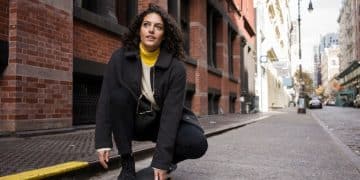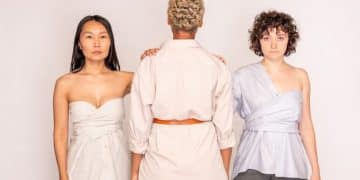Style Guide SOS: What to Wear When You Have Nothing to Wear
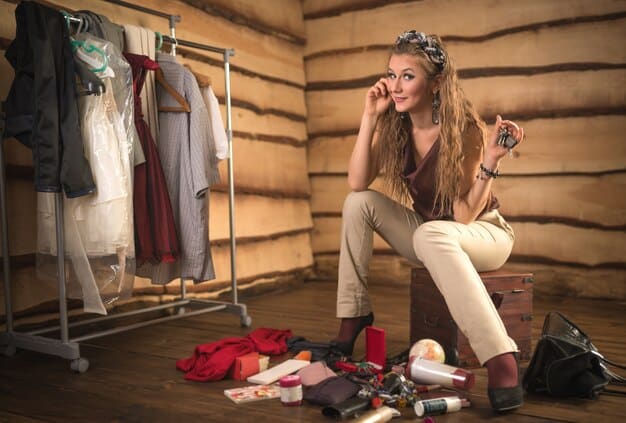
Style Guide SOS: What to Wear When You Have includes curating your closet, understanding your body shape, and selecting pieces, offering quick fixes and emphasizing confidence in styling.
Ever stood in front of your closet, staring at a sea of clothes, yet feeling like you have absolutely nothing to wear? The feeling is common, but with Style Guide SOS: What to Wear When You Have, we’ll navigate this sartorial crisis together.
Decoding Your Closet: A Style Guide SOS
The first step in solving the “nothing to wear” dilemma is to take a good, hard look at what you already own. This means going beyond a quick glance and really assessing the pieces in your closet.
The Closet Audit
Start by pulling everything out of your closet. Yes, everything. This may seem daunting, but it’s necessary to truly see what you have. As you go through each item, ask yourself: When was the last time I wore this? Does it fit properly? Do I feel good when I wear it? Is it still in good condition?
The KonMari Method
Inspired by Marie Kondo, hold each item and ask yourself if it sparks joy. If it doesn’t, it’s time to let it go. Be honest with yourself – don’t hold onto things out of guilt or because you think you might wear them someday.
- Identify ill-fitting clothes and either alter them or donate them.
- Organize clothing by category and color to easily find items.
- Store out-of-season clothing in separate containers to maximize space.
After auditing and organizing your closet, you’ll have a much clearer picture of what you own. This will make it easier to create outfits and identify any gaps in your wardrobe.
Understanding Your Body Shape: A Style Guide SOS
Knowing your body shape is key to dressing in a way that flatters your figure. While there are many variations, the most commonly recognized body shapes are apple, pear, hourglass, rectangle, and inverted triangle.
Identifying Your Shape
Stand in front of a mirror in form-fitting clothing or undergarments. Look at the overall silhouette of your body. Are your shoulders wider than your hips? Is your waist defined? Are your hips wider than your shoulders? Understanding where your body carries weight can help you choose clothes that balance your proportions.
Dressing for Your Shape
Each body shape has certain styles that work best. For example, those with an hourglass figure often look great in fitted dresses and pieces that accentuate the waist, while those with a rectangle shape might opt for clothes that create curves and volume.
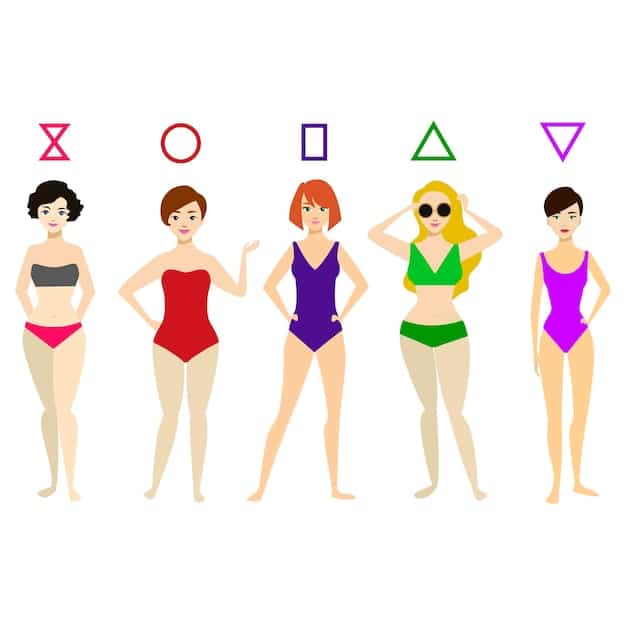
- Apple Shape: Opt for empire waists, A-line skirts, and tops with volume at the bottom.
- Pear Shape: Wear fitted tops, A-line skirts to balance wider hips, and statement necklaces.
- Hourglass Shape: Cinch your waist with belts, wear wrap dresses, and fitted tops.
- Rectangle Shape: Add volume with ruffles, peplums, and structured jackets.
Knowing your body shape is about enhancing your natural curves and creating a balanced silhouette. Experiment with different styles to find what makes you feel most confident and comfortable.
The Power of Versatile Pieces: A Style Guide SOS
Building a wardrobe with versatile pieces is a cornerstone of having something to wear at any given time. These are items that can be mixed and matched to create a variety of outfits, making your wardrobe more functional and minimizing the feeling of having nothing to wear.
The Capsule Wardrobe
The concept of a capsule wardrobe is built on the idea of having a limited number of versatile items that can be combined in countless ways. Think neutral colors, classic cuts, and high-quality materials.
Key Versatile Pieces
Certain items are essential for a versatile wardrobe. A well-fitting pair of dark wash jeans, a classic white button-down shirt, a black blazer, and a neutral-colored sweater are great foundational pieces.
- Combine a white button-down with jeans for a casual look, or dress it up with a blazer and trousers.
- A black blazer can be paired with almost anything, from dresses to skirts to pants.
- Neutral sweaters can be layered over shirts or worn alone with skirts or jeans.
Investing in versatile pieces ensures you always have a base to work with. They make it easy to create outfits for any occasion, reducing the stress of figuring out what to wear.
Accessorizing for Impact: A Style Guide SOS
Accessories can transform a simple outfit into something special. They are the finishing touches that add personality and style to your look. With the right accessories, you can create multiple outfits from the same basic pieces.
The Right Accessories
Start with a few key accessories that can be worn with a variety of outfits. A statement necklace, a colorful scarf, a classic watch, and a versatile handbag are great additions to any wardrobe.
Accessorizing Techniques
Don’t be afraid to experiment with different accessories to see what works best for you. Try layering necklaces, adding a belt to define your waist, or changing up your handbag to create different looks.
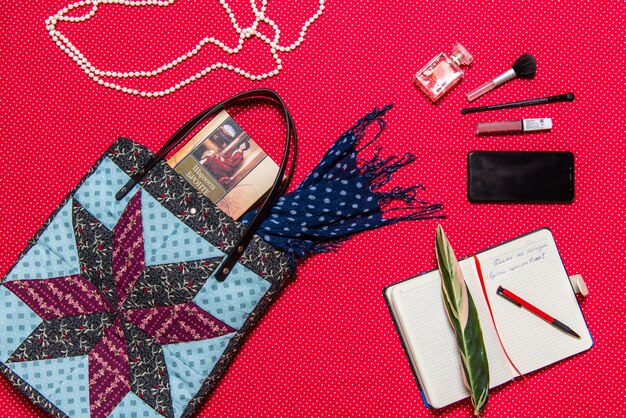
- Use scarves to add color and pattern to neutral outfits.
- Belts can cinch your waist and create a more defined silhouette.
- Jewelry can dress up or dress down an outfit, depending on the occasion.
Accessorizing is about adding your personal touch to an outfit. With a few key accessories, you can elevate your style and make any outfit feel fresh and new.
Quick Fixes and Style Tweaks: A Style Guide SOS
Sometimes, all it takes is a few quick fixes or style tweaks to transform an outfit. These simple adjustments can make a big difference in how you look and feel.
Rolling Up Sleeves
Rolling up the sleeves of a button-down shirt or blazer can instantly make an outfit look more relaxed and effortless. This is a great way to add a touch of casual style to a more formal look.
Adding a Pop of Color
If your outfit feels a bit drab, try adding a pop of color with a bright accessory or a statement piece of clothing. This can instantly brighten up your look and add some personality.
- Tucking in your shirt can define your waist and create a more polished silhouette.
- Adding a belt can cinch your waist and add visual interest.
These quick fixes and style tweaks can help you feel more confident and put-together, even when you’re in a hurry. They are easy ways to elevate your style and make the most of what you have.
Confidence is Your Best Accessory: A Style Guide SOS
Ultimately, the most important thing you can wear is confidence. No matter what you’re wearing, if you feel good about yourself, you’ll look good too. Style is about expressing who you are and feeling comfortable in your own skin.
Embracing Your Style
Don’t be afraid to experiment with different styles and find what makes you feel most confident. Try new trends, mix and match different pieces, and don’t worry about what anyone else thinks. Style is personal, and it’s about finding what works for you.
Positive Self-Talk
Practice positive self-talk and focus on your strengths. When you feel good about yourself, it shows. Confidence is contagious, and it can make any outfit look amazing.
- Remember that clothes are just clothes, and they don’t define you.
- Focus on what you love about yourself and your body.
Cultivating confidence is a lifelong journey, but it’s worth it. When you feel confident, you can take on anything, and you’ll look great doing it.
| Key Point | Brief Description |
|---|---|
| ✨ Closet Audit | Assess your current wardrobe and remove items you no longer wear. |
| 💃 Body Shape | Understand your body shape to choose flattering styles. |
| 👗 Versatile Pieces | Invest in items that can be mixed and matched. |
| 💎 Accessories | Use accessories to transform and elevate your outfits. |
FAQ
▼
Begin by removing everything from your closet. Sort items into keep, donate, and discard piles. Be honest about what you wear and love. Consider the last time each item was worn and its condition.
▼
Essential versatile pieces include a well-fitting pair of dark wash jeans, a classic white button-down shirt, a black blazer, and a neutral-colored sweater. These can be mixed and matched to create various outfits.
▼
Stand in front of a mirror in form-fitting clothing or undergarments. Observe your overall silhouette, noting the proportions of your shoulders, waist, and hips. Common body shapes include apple, pear, hourglass, rectangle, and inverted triangle.
▼
Accessories add personality and style to an outfit. Key accessories include statement necklaces, colorful scarves, classic watches, and versatile handbags. They can transform a simple outfit into something special.
▼
Confidence is paramount. Wearing clothes that make you feel good about yourself is essential. Style is about expressing who you are and feeling comfortable in your skin. Focus on your strengths and embrace your style.
Conclusion
Mastering the art of dressing well, even when it feels like you have nothing to wear, is all about understanding your wardrobe, body shape, and the power of versatile pieces and accessories. By decluttering, experimenting, and prioritizing confidence, you can always find something stylish and comfortable to wear, making every day a fashion success.

